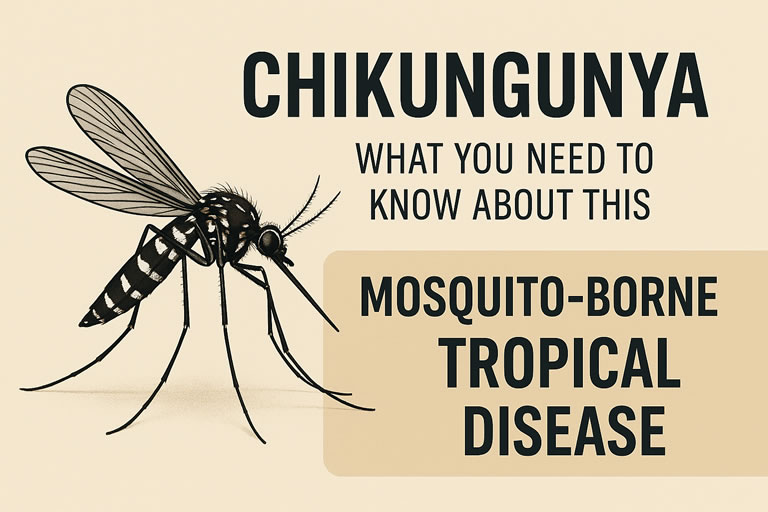- HOME
- INTRODUCTION Profile Milestone Team
- SERVICE Warranty RMA Policy Technical Support
- PRODUCTS Surgical Energy Platform Electrosurgical Unit Patient Monitor Medical Pump Electrocardiograph Handheld Pulse Oximeter Fetal Doppler Fingertip Pulse Oximeter Operation Room Veterinary Series
- NEWS Company News Exhibition News
- VIDEO
- CONTACT
- ----------
- Chikungunya: What You Need to Know About This Mosquito-Borne Tropical Disease
- 2025-07-31 09:34:19

Chikungunya: What You Need to Know About This Mosquito-Borne Tropical Disease
Chikungunya is an acute viral disease transmitted by mosquito bites, with outbreaks increasingly reported across Africa, Asia, and Latin America. This article provides a comprehensive overview of the mosquitoes responsible, the virus origin, symptoms, expert guidance from global health authorities, and evidence-based prevention strategies to help the public stay informed and protected.
What Is Chikungunya?
Chikungunya is caused by the Chikungunya virus (CHIKV) and is primarily characterized by sudden high fever, severe joint pain, and rash. While most patients recover within a week, some may suffer from persistent arthritis-like symptoms that significantly affect quality of life.
According to the World Health Organization (WHO)’s Chikungunya fact sheet: “The virus is highly transmissible and there is currently no specific antiviral treatment or commercial vaccine available.”
What Kind of Mosquitoes Spread Chikungunya?
Two main mosquito species in the Aedes genus are responsible for spreading the Chikungunya virus:
-
Aedes albopictus (Asian tiger mosquito): Native to Asia but now widespread in the Americas and parts of Europe. It is active during the day, especially in early morning and late afternoon.
-
Aedes aegypti: More common in tropical urban areas, it breeds in artificial water containers such as buckets, jars, and discarded tires.
The CDC Chikungunya Virus Information states: “Aedes aegypti and Aedes albopictus are the primary vectors of the Chikungunya virus. They bite during daylight hours and follow a transmission pattern similar to dengue fever.”
Where Do the Virus and Mosquitoes Come From?
Chikungunya virus was first identified in Tanzania in 1952. Since then, it has spread across Africa, the Middle East, South and Southeast Asia, and the Americas. Globalization, increased travel, and climate change have expanded the mosquito’s habitat, introducing the virus to non-endemic regions.
As noted in the ECDC Chikungunya Epidemiological Update: “In recent years, the expansion of Aedes albopictus into southern Europe has resulted in several locally transmitted cases, indicating that the virus is breaching traditional geographical boundaries.”
How Do People Get Infected and What Are the Symptoms?
The primary mode of infection is the bite of an infected mosquito. Mosquitoes acquire the virus by biting an infected person and then transmit it to others through subsequent bites.
Typical symptoms include:
-
High fever (above 38.5°C or 101.3°F)
-
Severe joint pain (often in the hands, knees, or ankles)
-
Muscle pain and headache
-
Skin rash (on trunk and limbs)
-
Fatigue and nausea
The PAHO/WHO Chikungunya Clinical Management Guidelines state: “While the mortality rate is extremely low, special attention should be paid to infants, the elderly, and individuals with chronic conditions due to potential severe complications.”
How Can Chikungunya Be Prevented?
Since there is no vaccine or antiviral treatment, preventing mosquito bites is the most effective way to stop Chikungunya transmission. WHO recommends the following strategies:
1. Eliminate Mosquito Breeding Sites
-
Remove any standing water in and around homes (e.g., tires, plant saucers, empty containers)
-
Change water in vases and buckets frequently
-
Keep rain gutters clean and clear
2. Personal Protection
-
Wear long-sleeved shirts and long pants
-
Use mosquito repellents with DEET, IR3535, or picaridin
-
Sleep under mosquito nets, especially during daytime naps
-
Install window screens and door nets
3. Community-Wide Action
According to the WHO Vector Control Guidelines: “Individual efforts alone are insufficient to block virus transmission. Community-wide environmental control and government-led vector management strategies are essential.”
Is There a Cure for Chikungunya?
There is no specific antiviral treatment, and management is focused on relieving symptoms:
-
Use fever-reducing medications like acetaminophen
-
Stay hydrated
-
Get adequate rest
-
For joint pain, short-term use of nonsteroidal anti-inflammatory drugs (NSAIDs) may help
Important note: Avoid aspirin and similar drugs until dengue fever is ruled out, as they can worsen bleeding complications.
Final Thoughts: What Should You Do?
Though Chikungunya may not be widespread in temperate regions, its risk is increasing due to travel and climate shifts. Public awareness, personal protection, and community cooperation are the pillars of prevention—especially during the rainy season or in tropical travel destinations.
Remember: No mosquitoes, no Chikungunya.

